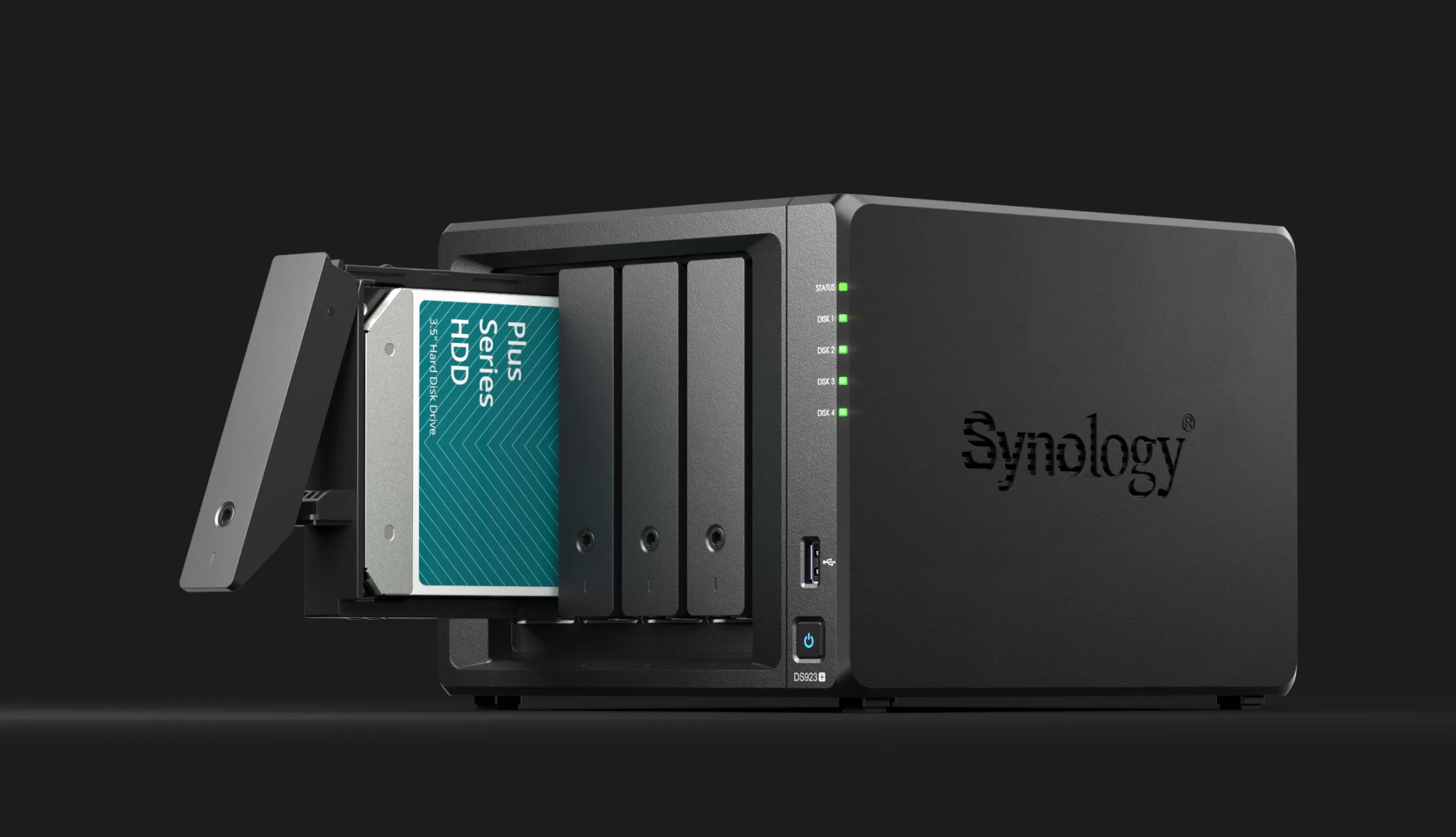Home entertainment has evolved significantly, with many enthusiasts now considering projectors as a viable and often superior alternative to traditional smart TVs for creating an immersive home theatre experience. The allure of a large, cinematic screen that can fill a wall is a major draw, offering a viewing scale that even the largest televisions struggle to match. However, assembling a high-quality home theatre setup, complete with a capable projector and a robust sound system, can often be a significant financial undertaking, with costs for good components easily running into the many thousands of Ringgit.
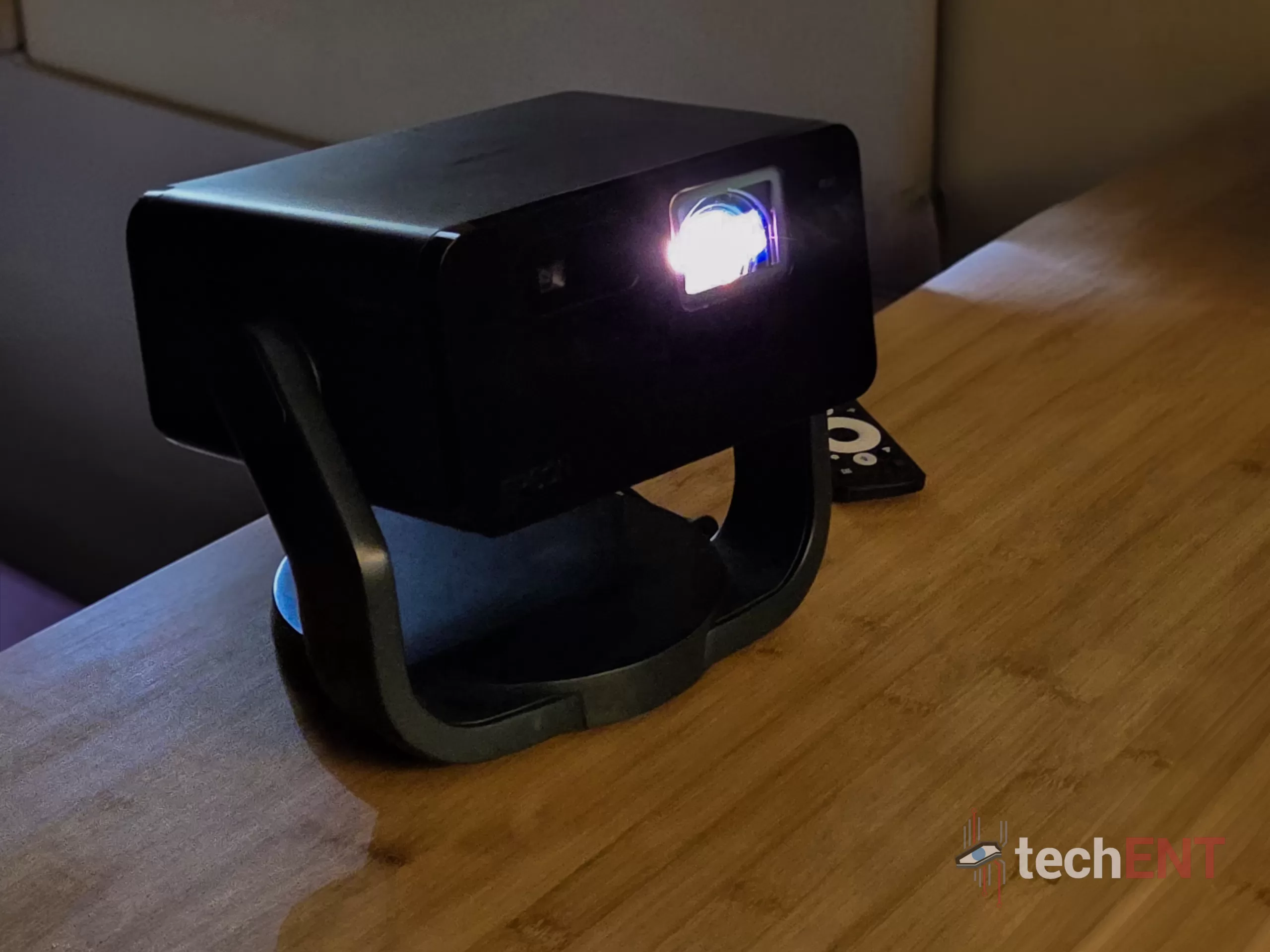
Positioned in the market with a sub-RM5,000 price point, the EPSON EpiqVision Mini EF-22N seems to be a compelling option for those aspiring to build a home theatre without breaking the bank. This projector packs several key features that make it attractive for this purpose, including a Full HD 1080p resolution, a laser light source for vibrant and consistent brightness, 3LCD technology which eliminates the rainbow effect, a high dynamic contrast ratio of over 5,000,000:1, and built-in speakers with Dolby Audio support. Furthermore, its integrated Google TV platform simplifies access to streaming services, and automatic image adjustments like keystone correction and focus aid in flexible placement and setup.
In this review, we will delve deeper into the EPSON EF-22N to determine if its features and performance justify the investment for individuals looking to establish or upgrade their home theatre setup within a more accessible budget. We will explore its capabilities and limitations to help you decide if the EF-22N is truly worth it and how well it can integrate into your home entertainment space.
Design
The design of the EPSON EF-22N is a notable aspect, especially for modern living spaces. Its compact dimensions, listed at approximately 236 x 191 x 191 mm, make it a suitable fit even for smaller home layouts where space is at a premium. Complementing its size is a relatively light weight of approximately 3.0 kg, which is advantageous for potential ceiling mounting, simplifying installation without the need for extensive structural modifications or “hacking.”
A key feature of the EF-22N’s design is its integrated swivel base. This stand allows for remarkable flexibility in positioning, offering 360-degree horizontal rotation and 150-degree vertical rotation. This dynamic adjustability makes it easy to achieve the perfect projection angle in almost any room setup, adapting to various surfaces, including ceilings. However, it’s worth noting that this swivel base operates manually, requiring physical adjustment to orient the projector as needed. While the stand enhances the projector experience with instant auto keystone correction, the base itself is not electronically controlled for automated positioning.
In terms of aesthetics, the EF-22N features a sleek and modern, minimalistic design. The EF-22N specifically comes in a Metallic Navy colour. While this offers a touch of sophistication, we feel that the inclusion of more neutral and minimal colour options, like a standard white or black, would allow the projector to blend even more seamlessly into a wider variety of home décors and setups.
Hardware
The EPSON EF-22N is equipped with a set of hardware specifications designed to deliver a capable home theatre experience in a compact form factor. At its core, it utilises an RGB liquid crystal shutter projection system with a 0.62-inch LCD panel, producing a Native Resolution of Full HD (1080p). The light source is a durable Laser Diode, boasting an impressive life of up to 20,000 hours in both Normal and Quiet modes.
For visuals, the projector offers a White and Colour Light Output of 1,000 lumens, suitable for various lighting conditions, and an exceptional Contrast Ratio of over 5,000,000:1, contributing to sharp and detailed images. It is capable of projecting screen sizes ranging from 30 to an expansive 150 inches. Audio is handled by built-in 5W x2 speakers, complemented by a Passive Radiator on the EF-22N model, and supports Dolby Audio.
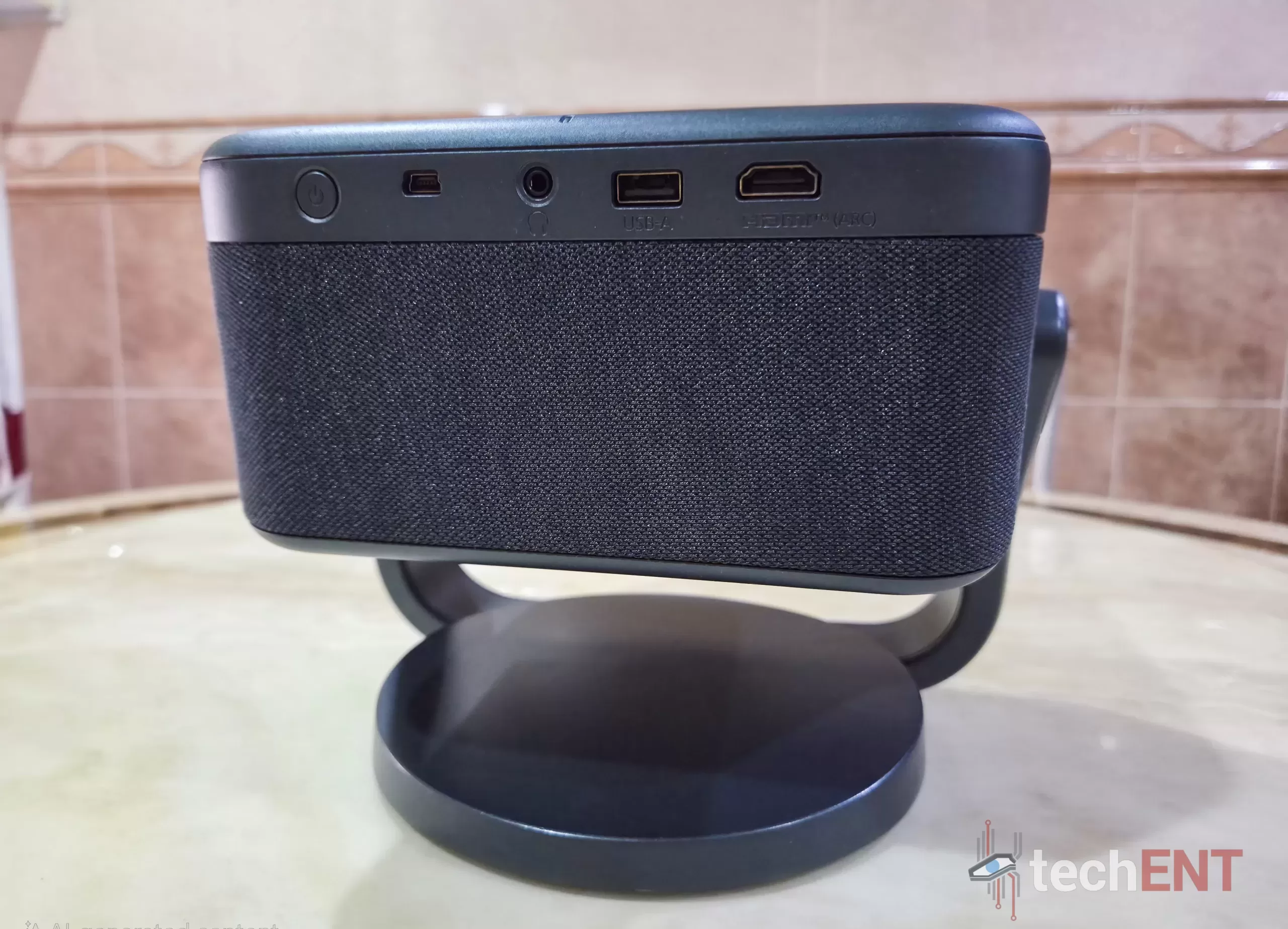
In terms of connectivity, the EF-22N includes built-in wireless capabilities. For physical connections, it provides one HDMI input (with HDCP 2.3 and ARC support), one USB Type-A port (for USB storage, camera, mic, or HID), one USB Type Mini-B port (for service), and a Stereo Mini audio output for headphones.
While the inclusion of essential ports covers basic connectivity, the presence of only a single HDMI input could be a limiting factor for users with multiple external devices such as gaming consoles (like a PlayStation 5 or Nintendo Switch), set-top boxes (such as Astro), Blu-ray players, and other media streamers. Juggling between these devices would require frequent unplugging and re-plugging, which might impact the seamlessness of a home theatre setup.
Specifications
| Projection Technology | RGB liquid crystal shutter projection system |
| LCD Size | 0.62-inch |
| Native Resolution | Full HD (1080p) |
| Light Source | Laser Diode |
| Light Source Life | 20,000 hours (Normal/Quiet) |
| Screen Size | 30″ to 150″ |
| White/Colour Light Output | 1,000 lm/1,000 lm |
| Contrast Ratio | Over 5,000,000:1 |
| Internal Speaker(s) | 5W x2 + Passive Radiator |
| HDMI In | 1 (HDCP 2.3, ARC Supported) |
| Wireless | Built-in |
| USB Type A | 1 (For USB Storage, Camera, Mic, HID) |
| USB Type Mini-B | 1 (For service) |
| Audio Out | 1 (Stereo Mini for Head Phone) |
| Dimensions (WxDxH) | 236 x 191 x 191 mm (Excluding Feet) |
| Weight | Approx. 3.0 kg |
| Power Consumption | 103W/73W (Normal/Eco) |
| Fan Noise | 22dB/18dB (Normal/Eco) |
| Retail Price (RM) | RM4,689.00 |
| Retail Price (USD) | USD$999.99 |
User Interface
The user interface of the EPSON EF-22N is built around the integrated Google TV operating system, offering a user-friendly and intuitive experience from the moment you power it on. The initial setup is notably seamless, with the UI providing clear, step-by-step guidance to get the projector connected and configured. This simplicity ensures that even those who are not tech-savvy can navigate the process with ease, minimising potential frustration.
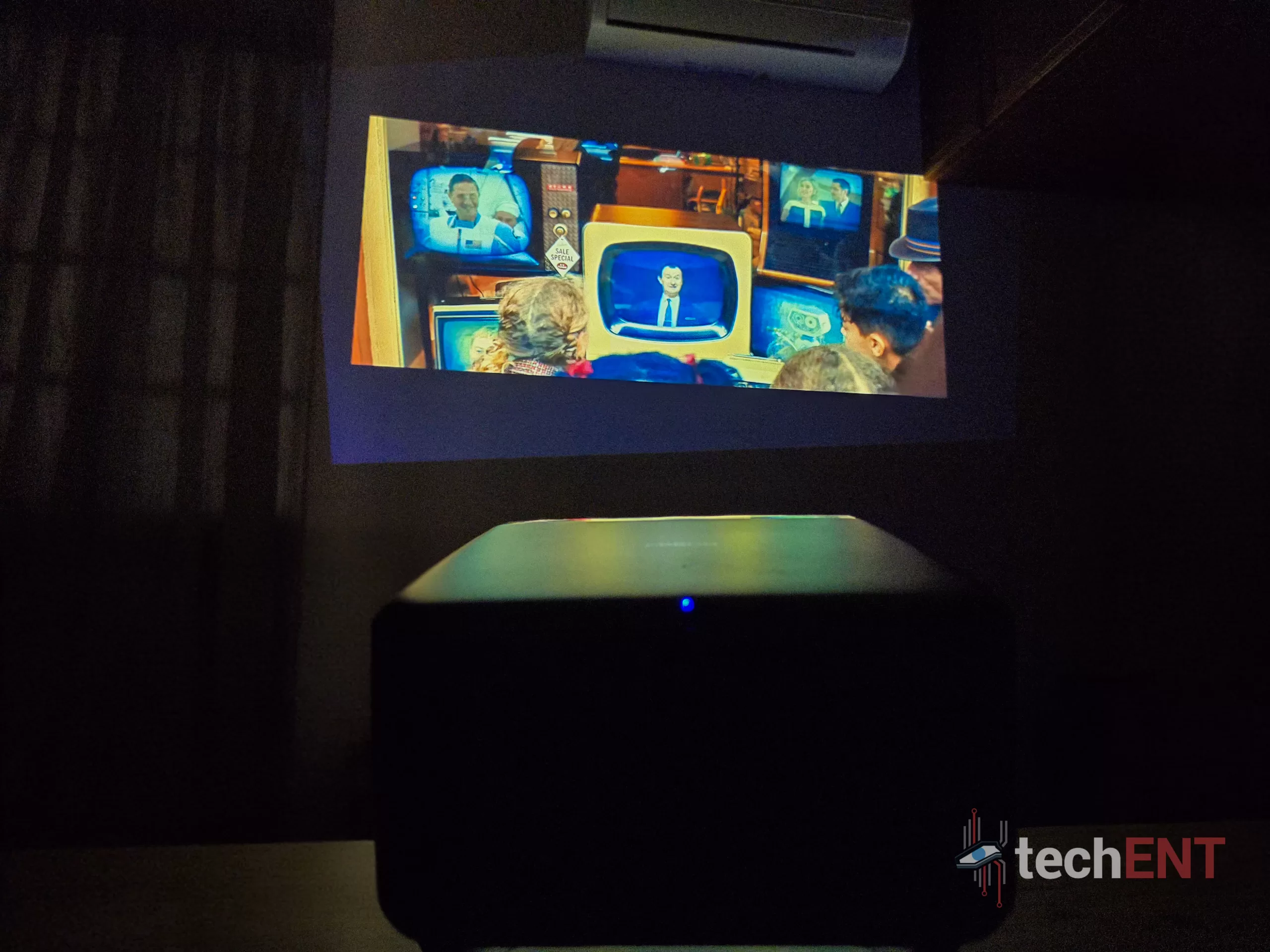
The inclusion of Google TV is a significant advantage, transforming the projector into a smart media hub. This platform offers a streamlined interface that is familiar to anyone who has used an Android TV or other modern smart TV systems. Navigating through menus, finding content, and managing applications feels intuitive and responsive. Google TV organises movies, shows, and live TV from various streaming services into a single, easily searchable interface, often providing personalised recommendations based on your viewing habits. Access to the Google Play Store allows users to download a wide array of apps, further expanding the entertainment options beyond pre-installed services like Netflix.
Complementing the Google TV experience is the built-in Google Cast functionality. This feature allows for effortless casting of content directly from compatible devices such as Android or iOS smartphones and tablets, as well as Chrome browsers on computers. This means you can easily share videos, photos, or even mirror your device’s screen onto the large projection surface. The combination of the intuitive Google TV interface and the convenience of Google Cast makes interacting with the EF-22N straightforward and enjoyable, closely mirroring the experience of using a high-quality smart television.
Performance
The performance of the EPSON EF-22N is a critical aspect for its role as a home theatre projector. Starting with its graphical capabilities, the projector delivers a Full HD (1080p) native resolution, providing crisp and clear images for movies and series. While the resolution is a standard for many home projectors, a notable point regarding its performance is the refresh rate. Contrary to initial assumptions, the EF-22N boasts a 2D Vertical Refresh Rate of 200 Hz – 240 Hz. This high refresh rate is actually quite beneficial, particularly for gaming, as it can result in smoother motion and a more responsive experience. This makes the projector surprisingly capable for gamers, even those who might consider themselves “hardcore,” as a high refresh rate is a sought-after feature in gaming displays. Beyond gaming, this high refresh rate contributes to the overall fluidity of motion in movies and fast-paced content.
The projector also handles movies and series commendably. With support for HDR10 and a high contrast ratio of over 5,000,000:1, it delivers enhanced detail in both bright and dark scenes. We observed commendable performance even in challenging dark scenes, such as the battle sequences in Game of Thrones, where details remained visible and blacks were reasonably deep, contributing to an immersive viewing experience.
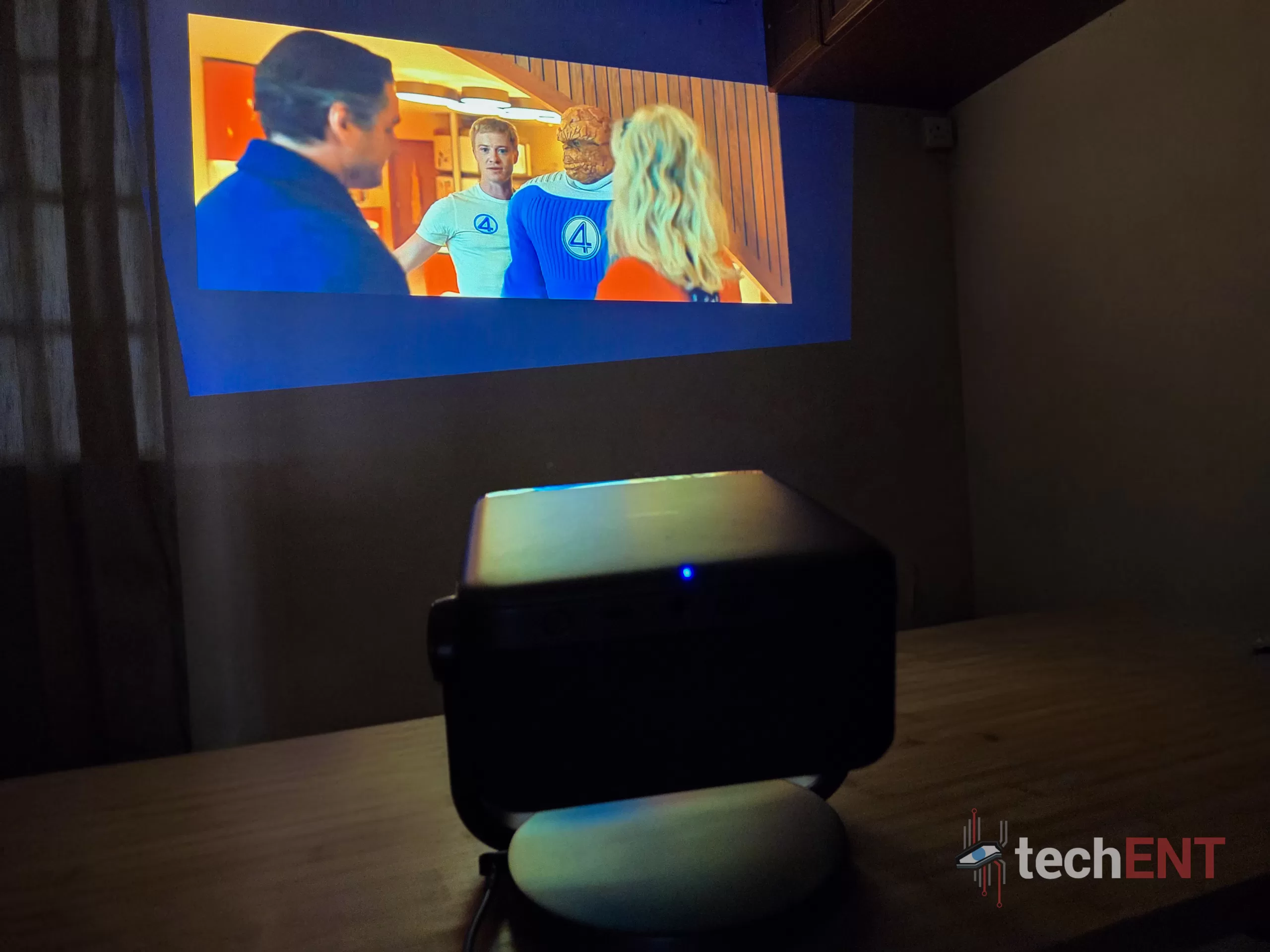
Furthermore, the EF-22N demonstrates a commendable ability to perform even in brightly lit environments. With a peak brightness of 1,000 lumens for both white and colour light output, the projector is designed to combat ambient light. In our testing, the image remained clear and crisp even in a fully lit room with outside light pouring in and projecting onto a reflective wall, which is a challenging scenario for many projectors. This makes the EF-22N versatile for use in various room conditions, not just dedicated dark home theatre rooms.
Moving to audio performance, the built-in 5W x2 speakers provide a surprising amount of volume and should suffice for smaller rooms, eliminating the immediate need for external speakers for casual viewing. The projector also supports Dolby Audio, enhancing the sound quality even from the integrated speakers. However, we would advise against consistently pushing the volume to its maximum for prolonged periods to avoid potential speaker tearing over time. For a more robust and immersive audio experience, connecting external speakers or a sound system would be recommended.
Regarding the cooling system, the EF-22N managed to remain relatively cool throughout a continuous 6-hour usage session. It appears that prolonged use did not result in noticeable burn-ins or overheating issues during our testing period. However, as with any electronic device, particularly projectors with powerful light sources, we would advise allowing the system to cool off significantly after extended viewing sessions. Additionally, ensuring the projector is set up in a well-ventilated area is crucial to provide adequate airflow for cooling and prevent potential overheating, contributing to the longevity of the device.
A Compelling Home Theatre Offering that Punches Above Its Weight with Compelling Features and Performance
the EPSON EpiqVision Mini EF-22N stands out as a compelling entry point for individuals looking to venture into the realm of home theatre projection. Its compact design and ease of setup, coupled with the intuitive Google TV interface, make it accessible even for those new to projectors.
One notable limitation, however, is the restricted number of ports, particularly the single HDMI input. In a market where many households utilise multiple devices such as gaming consoles, streaming boxes, and Blu-ray players, having only one HDMI port can be a significant drawback, necessitating frequent cable swapping. It is worth noting, however, that projectors offering two or three HDMI ports typically come at a price point at least double that of the EF-22N.
Despite this limitation, the EF-22N presents a compelling value proposition at its sub-RM5,000 price point. While other brands are introducing competitive offerings in the more affordable projector space, creating a challenge for differentiation, the EF-22N distinguishes itself through Epson’s established know-how and extensive experience in projection technology.
The projector’s performance is where it truly shines. It delivers sharp Full HD images, supports HDR for enhanced contrast and detail, and provides a surprisingly high refresh rate of 200 Hz – 240 Hz, making it suitable even for gaming. Its ability to perform commendably even in brightly lit environments, maintaining a clear and crisp image, showcases its technical prowess and Epson’s expertise. The inclusion of Dolby Audio support for the built-in speakers further enhances the out-of-the-box experience.
While it may be priced slightly higher than some other offerings in the budget segment, the EF-22N justifies this with its nearly perfect performance in key areas, including image sharpness, high refresh rate, and its capability in less-than-ideal viewing conditions. For those seeking a reliable and high-performing projector to enter the world of home theatre without a top-tier budget, the EPSON EF-22N is a strong contender worth serious consideration.
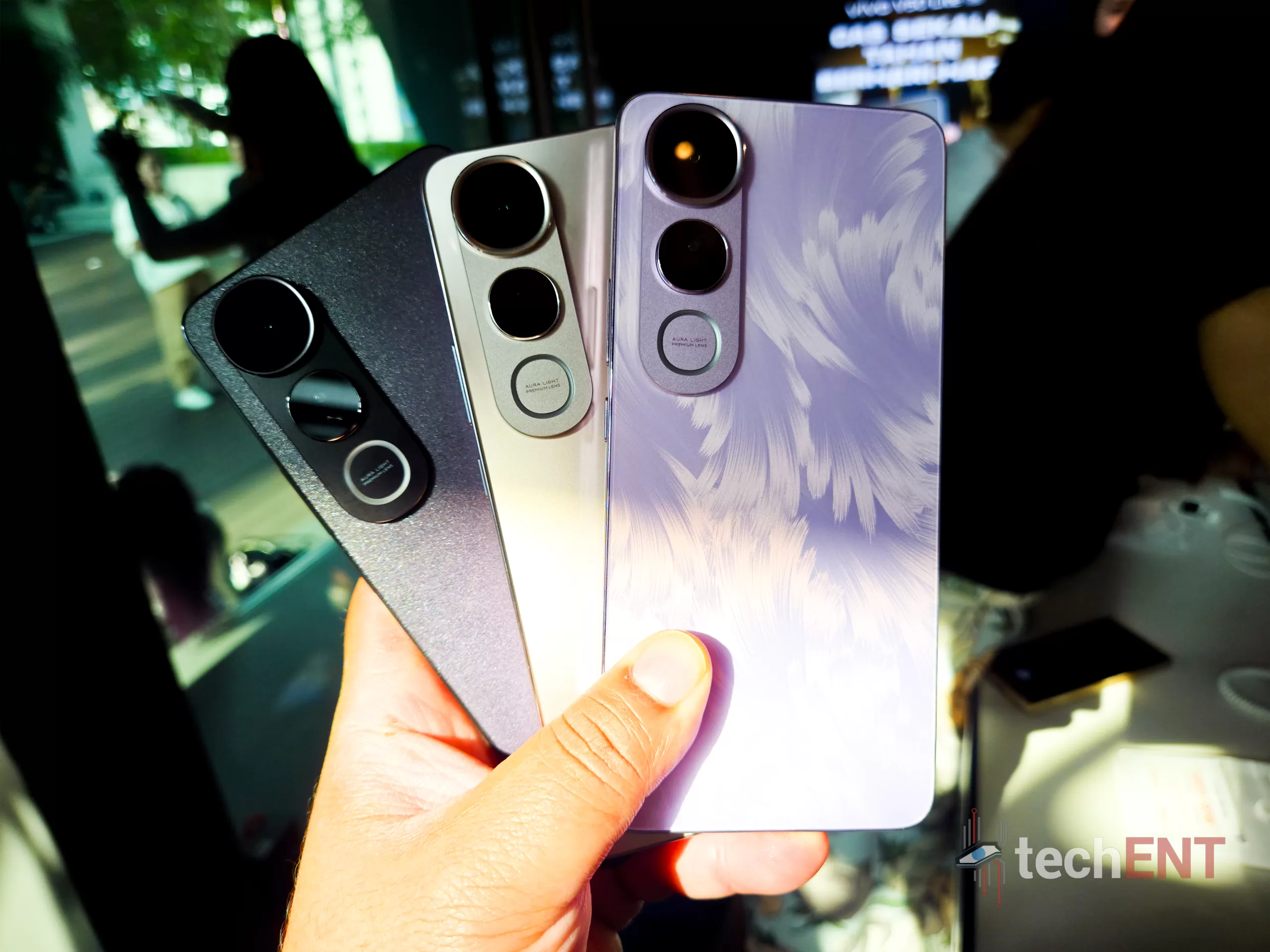
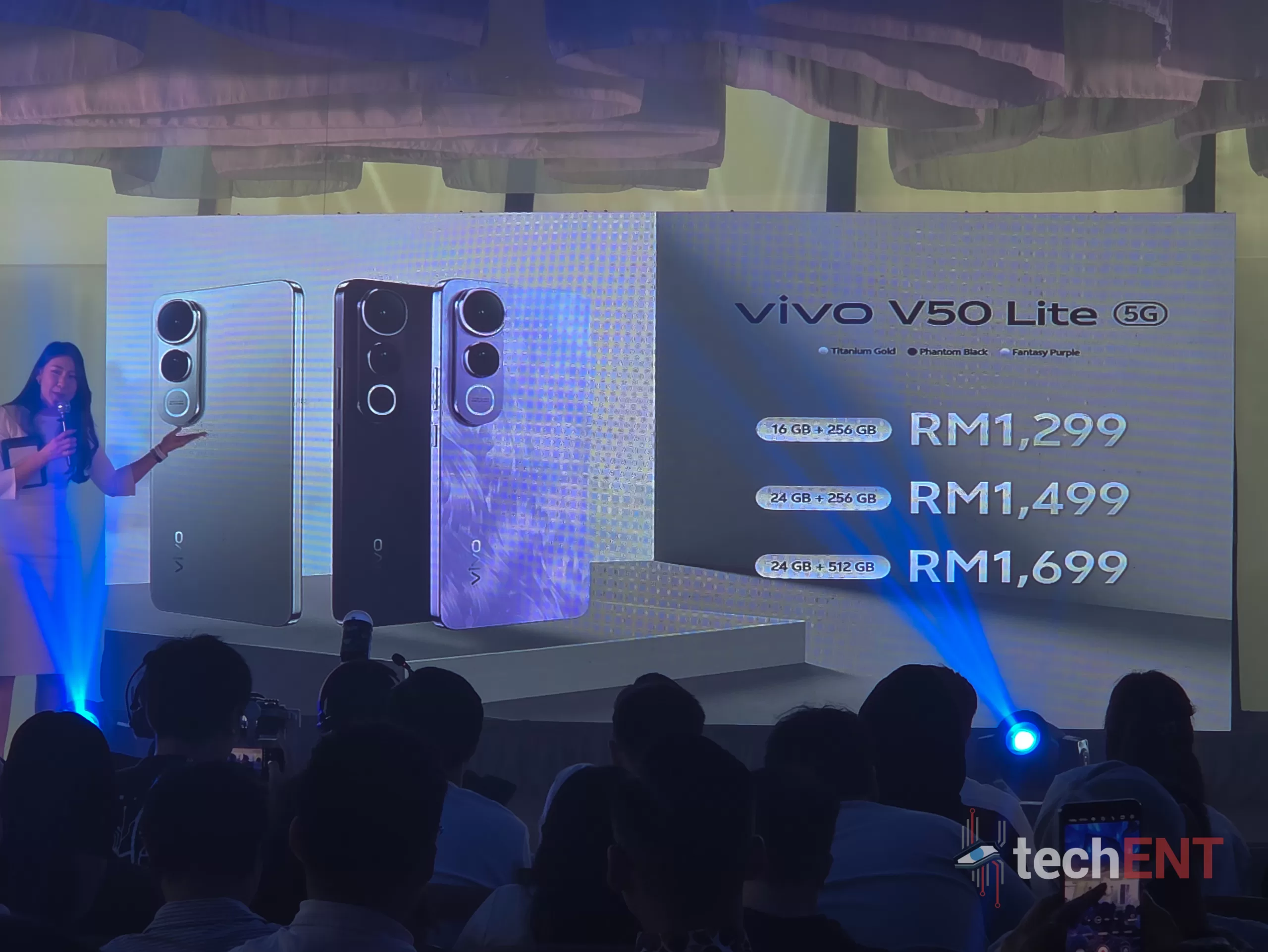
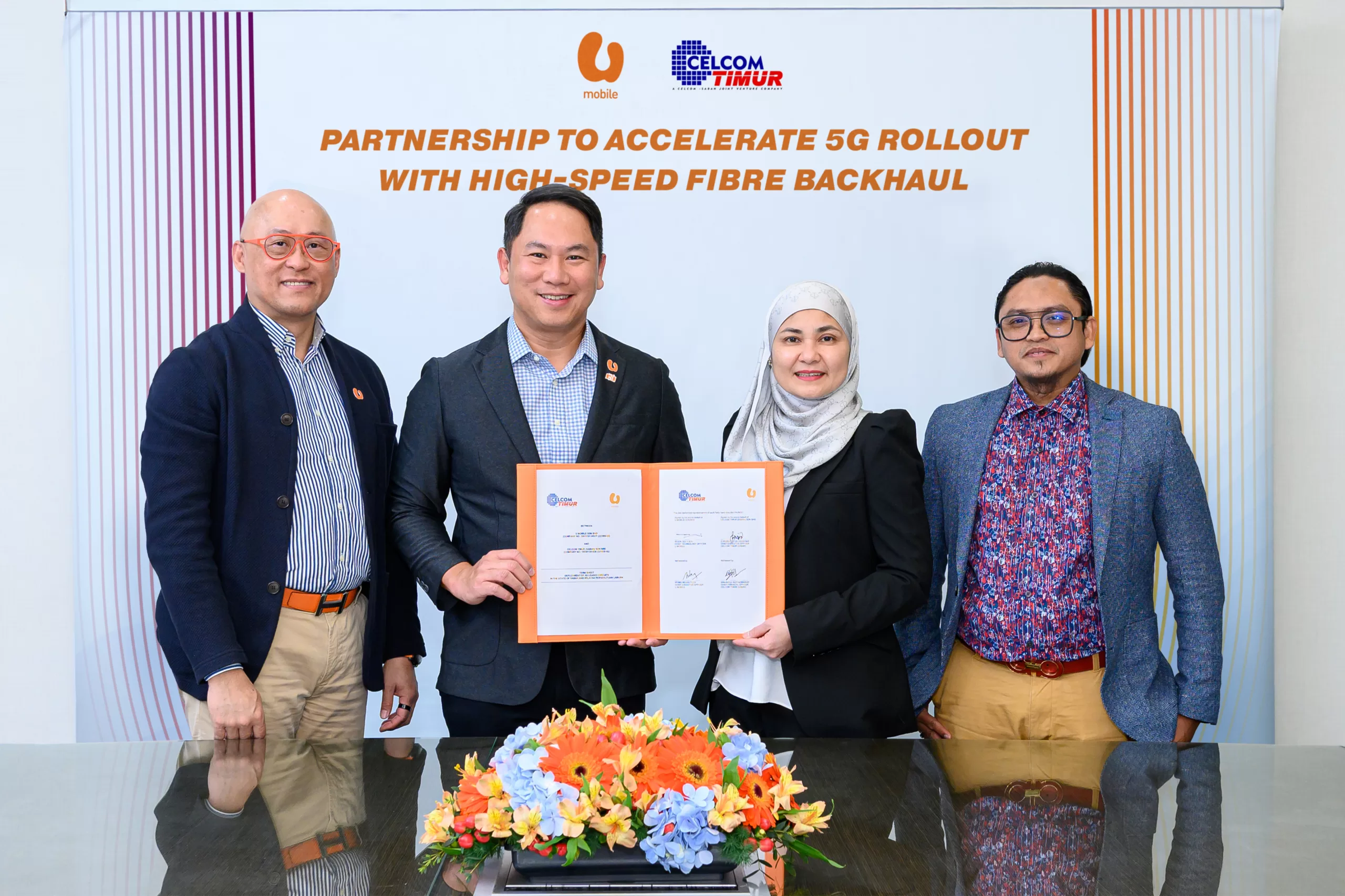

 This lens is distinguished as the world’s first telephoto zoom lens to offer a maximum focal length of 150mm and a constant F2 aperture. It provides a versatile focal range, starting at a standard 50mm and extending to 150mm, while maintaining a bright F2 aperture throughout the zoom range.
This lens is distinguished as the world’s first telephoto zoom lens to offer a maximum focal length of 150mm and a constant F2 aperture. It provides a versatile focal range, starting at a standard 50mm and extending to 150mm, while maintaining a bright F2 aperture throughout the zoom range. For video applications, the FE 50-150mm F2 GM minimizes focus breathing and is compatible with Sony’s Breathing Compensation feature on select Alpha cameras. It also offers Linear Response MF for precise manual focus control and quiet XD linear motors to reduce recording noise.
For video applications, the FE 50-150mm F2 GM minimizes focus breathing and is compatible with Sony’s Breathing Compensation feature on select Alpha cameras. It also offers Linear Response MF for precise manual focus control and quiet XD linear motors to reduce recording noise.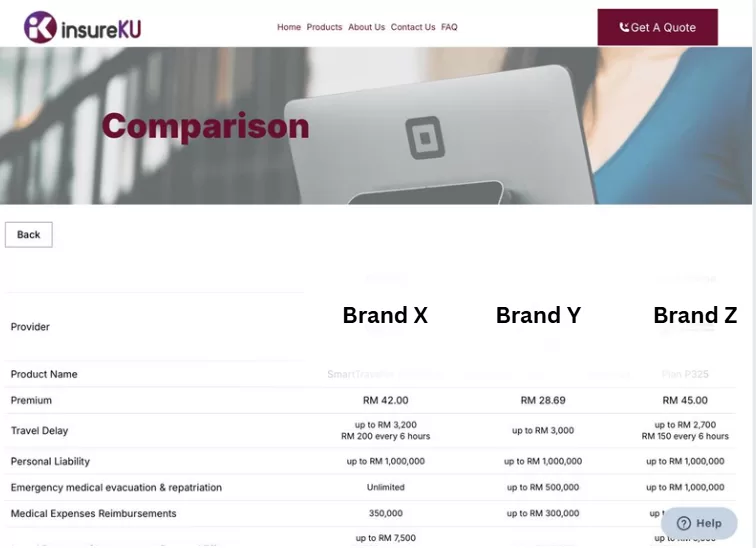

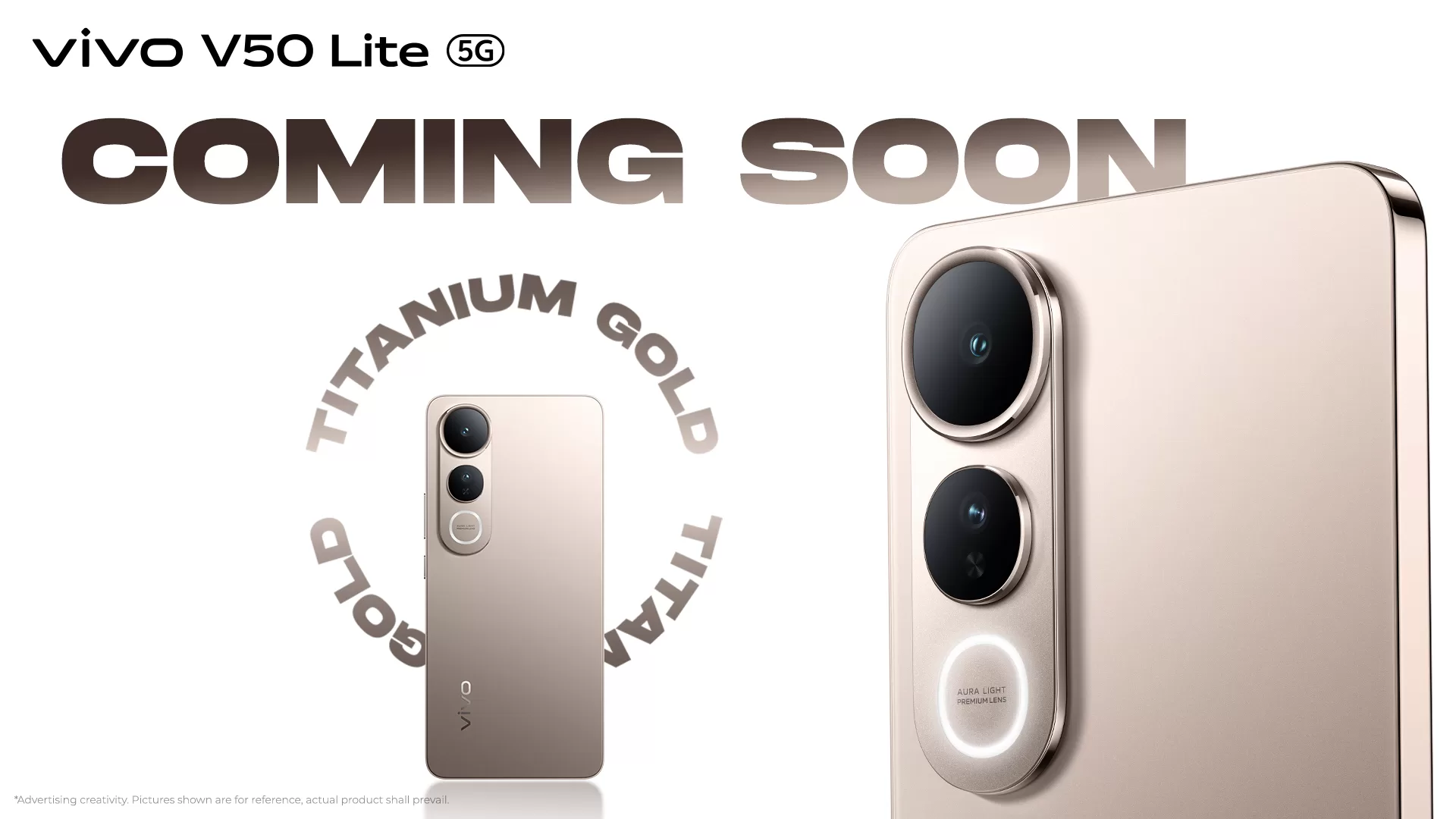

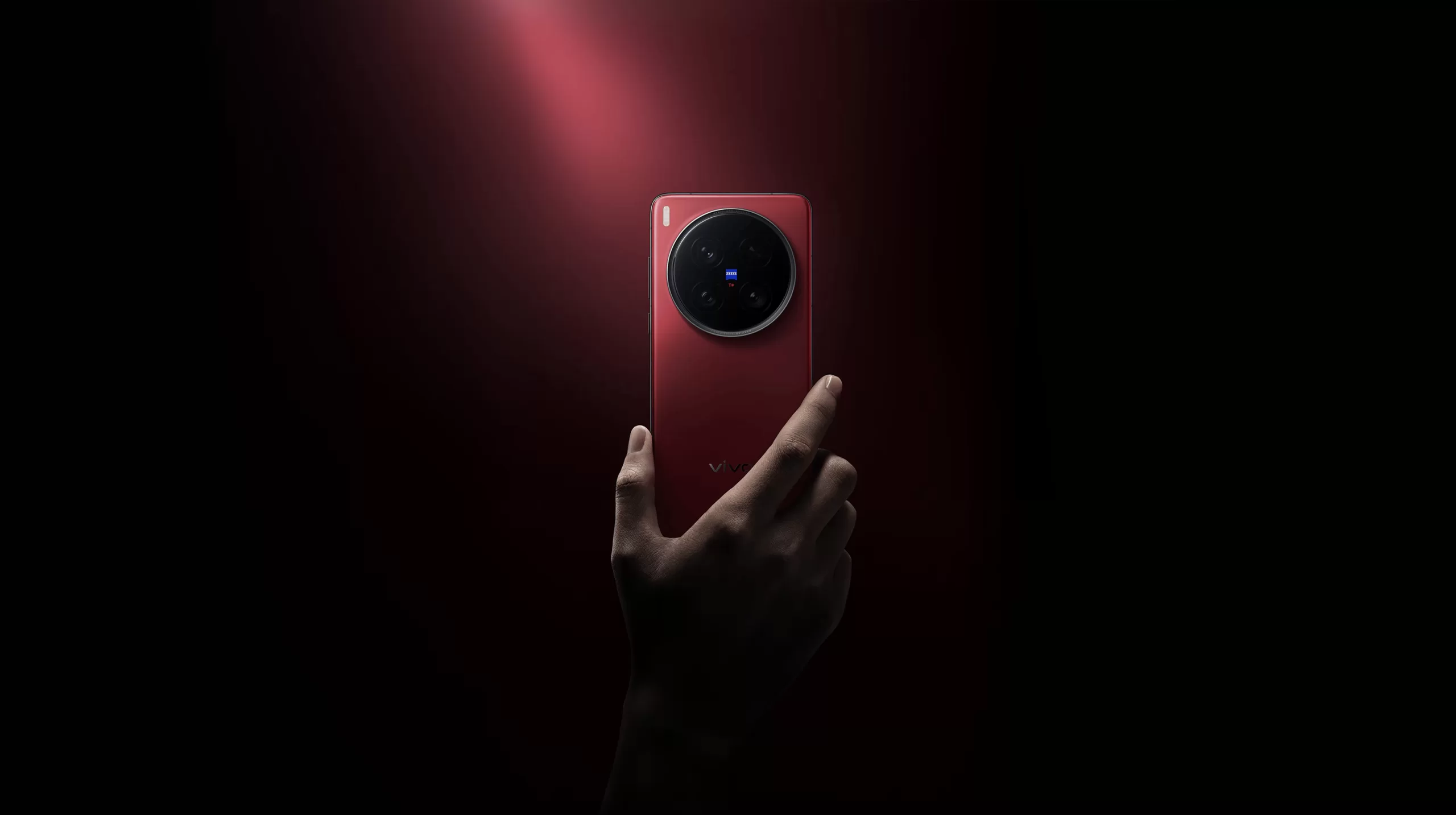
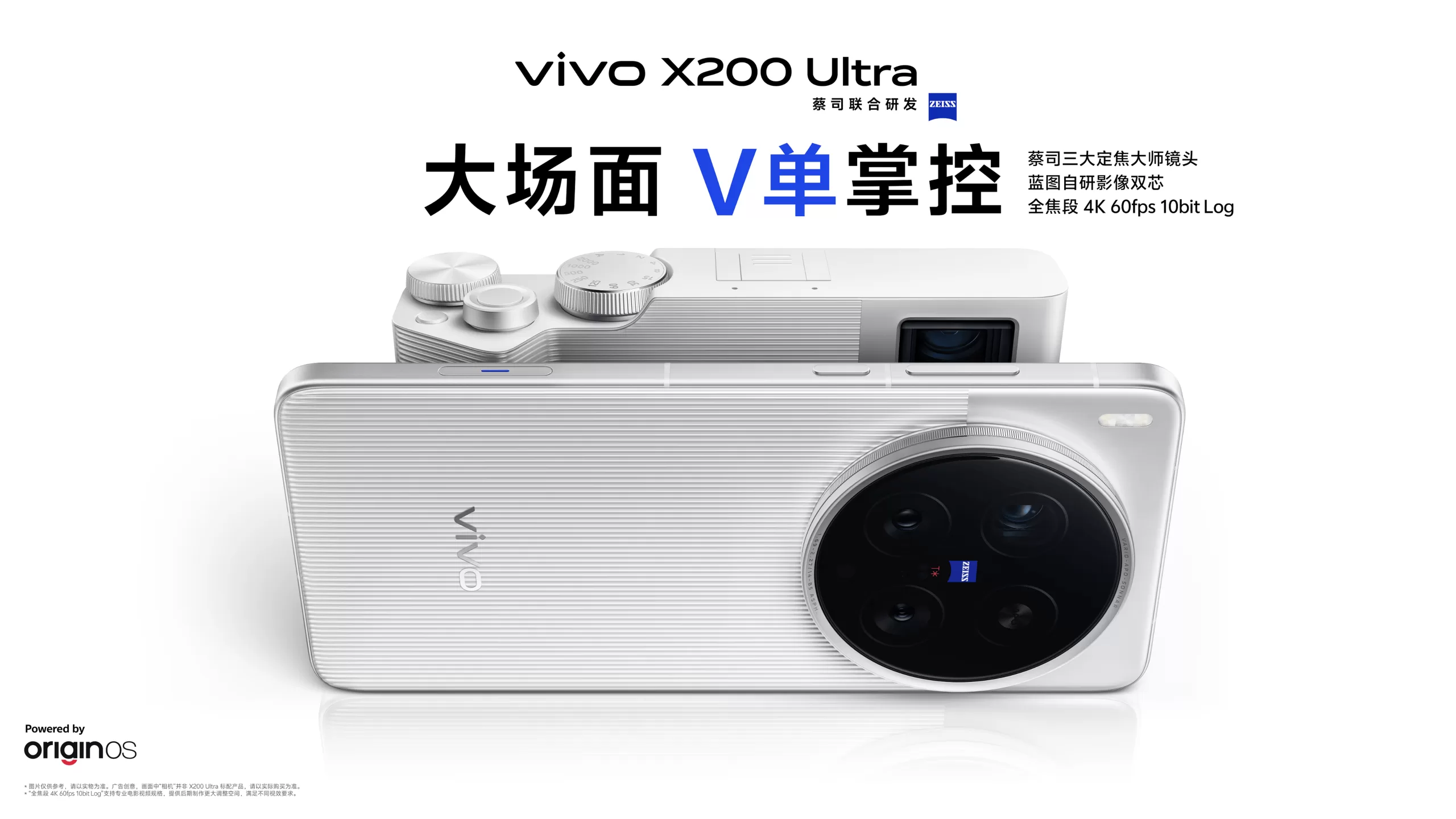 The visual experience on the X200 Ultra is nothing short of immersive, thanks to its expansive 6.82-inch QHD+ (1440 x 3200 pixels) LTPO AMOLED display. This represents a notable step up in resolution compared to the already sharp displays on the X200 and X200 Pro, translating to even finer detail and greater visual clarity. The adaptive 144Hz refresh rate ensures buttery-smooth scrolling and responsiveness, dynamically adjusting based on the content displayed to optimise power efficiency. With a peak brightness of an astounding 4500 nits, the Ultra promises exceptional legibility even under direct sunlight, a crucial feature for photographers and videographers working in various outdoor conditions.
The visual experience on the X200 Ultra is nothing short of immersive, thanks to its expansive 6.82-inch QHD+ (1440 x 3200 pixels) LTPO AMOLED display. This represents a notable step up in resolution compared to the already sharp displays on the X200 and X200 Pro, translating to even finer detail and greater visual clarity. The adaptive 144Hz refresh rate ensures buttery-smooth scrolling and responsiveness, dynamically adjusting based on the content displayed to optimise power efficiency. With a peak brightness of an astounding 4500 nits, the Ultra promises exceptional legibility even under direct sunlight, a crucial feature for photographers and videographers working in various outdoor conditions. The rear camera system is where the X200 Ultra truly distinguishes itself, representing a significant leap forward in mobile imaging. The primary 50MP wide-angle camera features Sony’s revolutionary 1-inch LYT-900 sensor. This large sensor size is a game-changer in mobile photography, allowing for significantly greater light capture, resulting in superior low-light performance, wider dynamic range with richer detail in highlights and shadows, and a shallower depth of field for more natural bokeh. This is a substantial upgrade over the already impressive main sensors found in the X200 and X200 Pro.
The rear camera system is where the X200 Ultra truly distinguishes itself, representing a significant leap forward in mobile imaging. The primary 50MP wide-angle camera features Sony’s revolutionary 1-inch LYT-900 sensor. This large sensor size is a game-changer in mobile photography, allowing for significantly greater light capture, resulting in superior low-light performance, wider dynamic range with richer detail in highlights and shadows, and a shallower depth of field for more natural bokeh. This is a substantial upgrade over the already impressive main sensors found in the X200 and X200 Pro.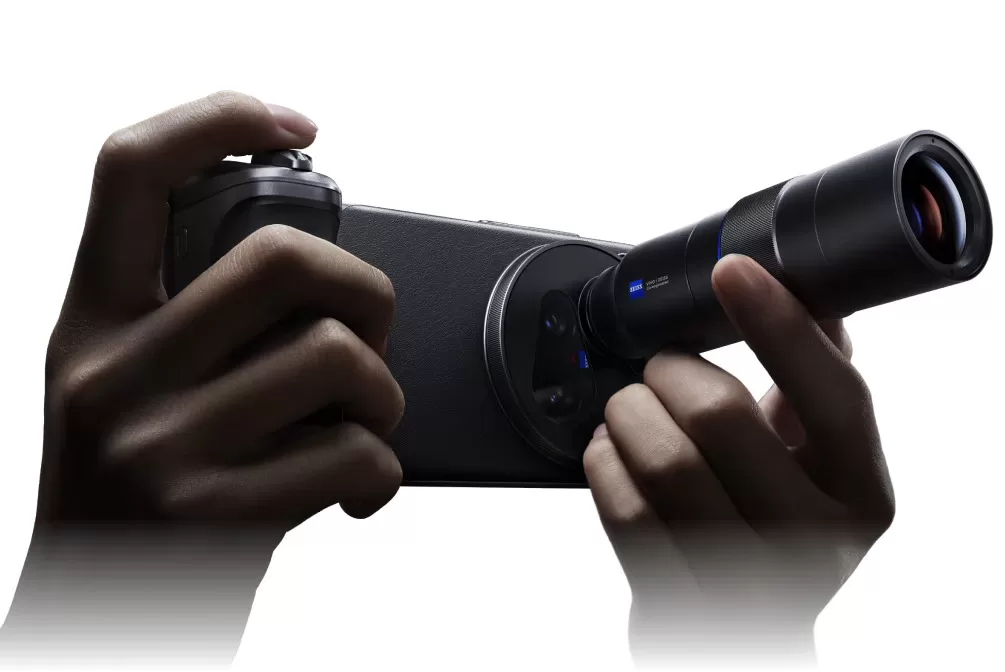 Powering this advanced hardware is a robust 5500mAh battery, providing ample power for a full day of intensive use. It supports blazing-fast 80W wired charging, allowing for quick top-ups, and also offers convenient 50W wireless charging. Connectivity options are future-proof, including the latest Wi-Fi 7 standard for high-speed wireless networking and Bluetooth 5.4 for efficient and reliable accessory connections, along with NFC for contactless payments and data transfer. The X200 Ultra runs on Vivo’s latest Funtouch OS 15, based on the Android 15 operating system, offering a refined user experience with a host of customisation options and features. Notably, the X200 Ultra boasts an impressive IP69 rating for dust and water resistance, offering a higher level of protection compared to the IP68 rating of the X200 Pro, providing users with greater peace of mind.
Powering this advanced hardware is a robust 5500mAh battery, providing ample power for a full day of intensive use. It supports blazing-fast 80W wired charging, allowing for quick top-ups, and also offers convenient 50W wireless charging. Connectivity options are future-proof, including the latest Wi-Fi 7 standard for high-speed wireless networking and Bluetooth 5.4 for efficient and reliable accessory connections, along with NFC for contactless payments and data transfer. The X200 Ultra runs on Vivo’s latest Funtouch OS 15, based on the Android 15 operating system, offering a refined user experience with a host of customisation options and features. Notably, the X200 Ultra boasts an impressive IP69 rating for dust and water resistance, offering a higher level of protection compared to the IP68 rating of the X200 Pro, providing users with greater peace of mind.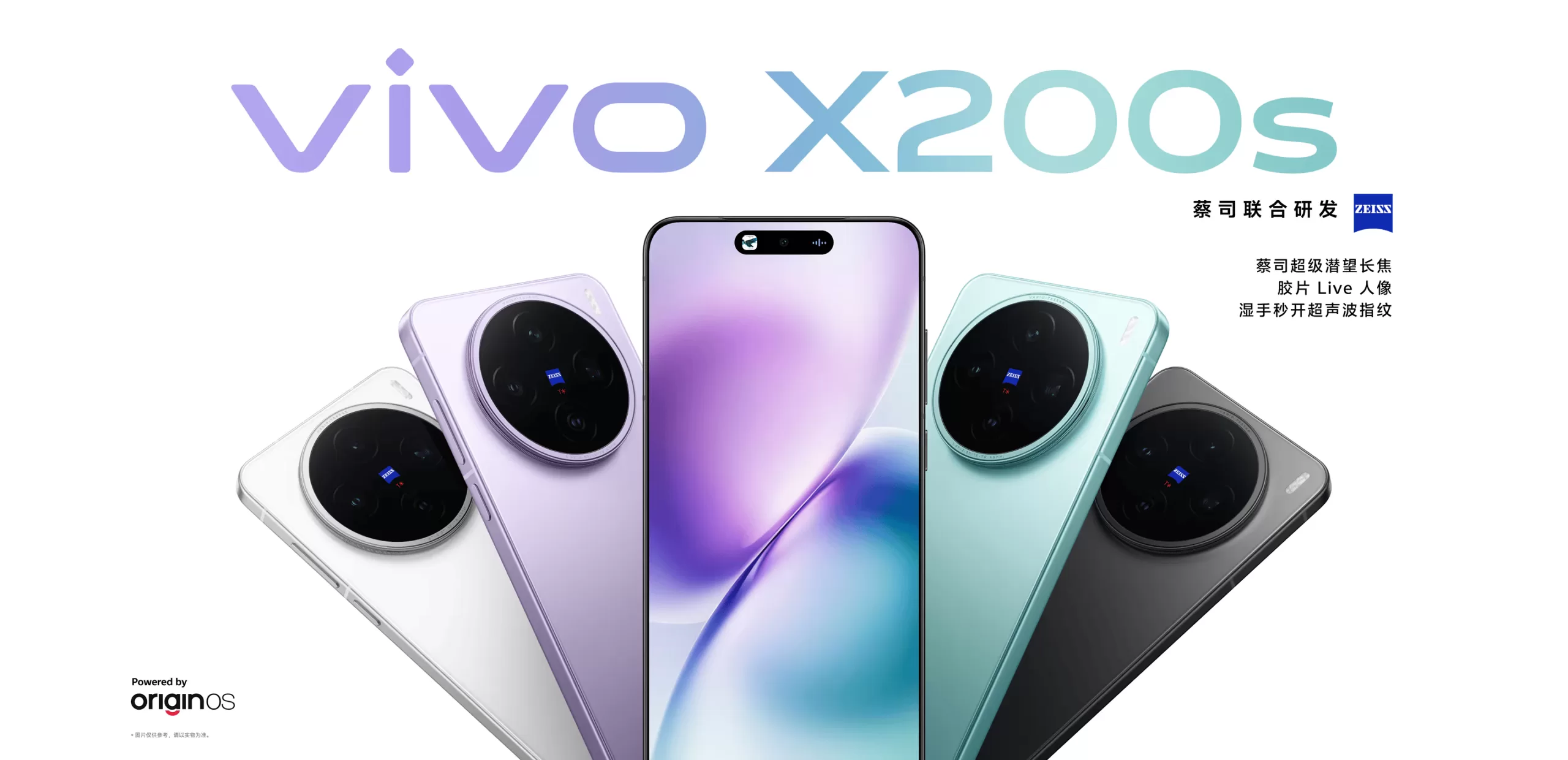 At its core, the X200s is powered by the MediaTek Dimensity 9400 chipset. This is the same flagship-level processor found in the X200 Pro, ensuring that the X200s delivers comparable high-end performance for demanding applications, multitasking, and gaming. This choice of chipset emphasises a focus on efficiency alongside raw power. The X200s is available in configurations ranging from 8GB to 16GB of LPDDR5X RAM, ensuring smooth multitasking and efficient memory management. Storage options utilise fast UFS 4.0 technology, with choices of 256GB, 512GB, and a 1TB option is also available for this model, catering to users with different storage requirements.
At its core, the X200s is powered by the MediaTek Dimensity 9400 chipset. This is the same flagship-level processor found in the X200 Pro, ensuring that the X200s delivers comparable high-end performance for demanding applications, multitasking, and gaming. This choice of chipset emphasises a focus on efficiency alongside raw power. The X200s is available in configurations ranging from 8GB to 16GB of LPDDR5X RAM, ensuring smooth multitasking and efficient memory management. Storage options utilise fast UFS 4.0 technology, with choices of 256GB, 512GB, and a 1TB option is also available for this model, catering to users with different storage requirements.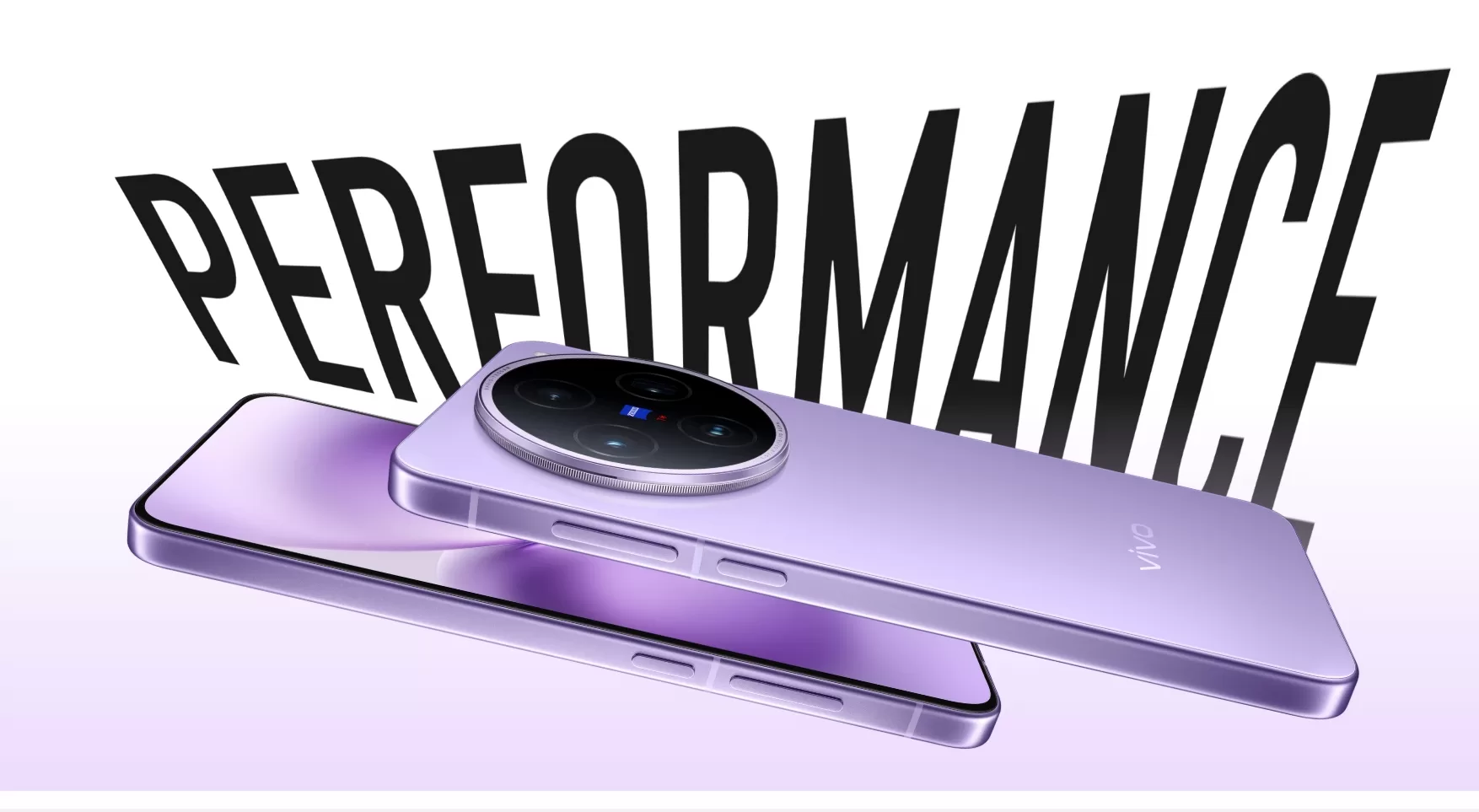 The true standout feature of the vivo X200s, however, is its massive 6000mAh battery. This is the largest battery capacity in the entire X200 series, promising exceptional battery life that can comfortably power users through even the most demanding days without needing to reach for a charger. This focus on endurance makes the X200s an appealing option for users who prioritise all-day battery life alongside flagship performance. The device supports 80W wired fast charging, allowing for rapid replenishment of the large battery when needed. Connectivity options are modern and comprehensive, including Wi-Fi 7 for high-speed wireless connectivity, Bluetooth 5.4 for reliable accessory pairing, and NFC for convenient contactless transactions. The X200s runs on Vivo’s intuitive Funtouch OS 15, based on the latest Android 15 operating system. For durability, the X200s features an IP68 rating for dust and water resistance, providing a solid level of protection against the elements.
The true standout feature of the vivo X200s, however, is its massive 6000mAh battery. This is the largest battery capacity in the entire X200 series, promising exceptional battery life that can comfortably power users through even the most demanding days without needing to reach for a charger. This focus on endurance makes the X200s an appealing option for users who prioritise all-day battery life alongside flagship performance. The device supports 80W wired fast charging, allowing for rapid replenishment of the large battery when needed. Connectivity options are modern and comprehensive, including Wi-Fi 7 for high-speed wireless connectivity, Bluetooth 5.4 for reliable accessory pairing, and NFC for convenient contactless transactions. The X200s runs on Vivo’s intuitive Funtouch OS 15, based on the latest Android 15 operating system. For durability, the X200s features an IP68 rating for dust and water resistance, providing a solid level of protection against the elements.